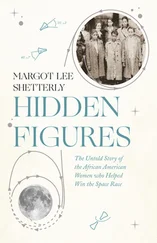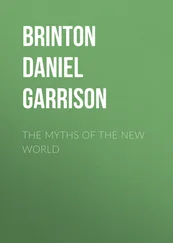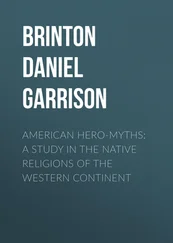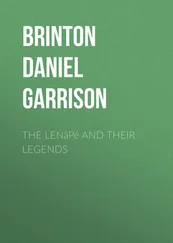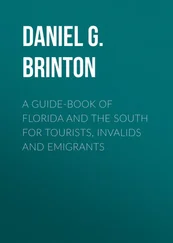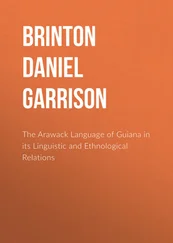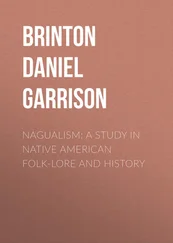Daniel Brinton - The American Race
Здесь есть возможность читать онлайн «Daniel Brinton - The American Race» — ознакомительный отрывок электронной книги совершенно бесплатно, а после прочтения отрывка купить полную версию. В некоторых случаях можно слушать аудио, скачать через торрент в формате fb2 и присутствует краткое содержание. Жанр: foreign_antique, История, История, foreign_edu, на английском языке. Описание произведения, (предисловие) а так же отзывы посетителей доступны на портале библиотеки ЛибКат.
- Название:The American Race
- Автор:
- Жанр:
- Год:неизвестен
- ISBN:нет данных
- Рейтинг книги:4 / 5. Голосов: 1
-
Избранное:Добавить в избранное
- Отзывы:
-
Ваша оценка:
- 80
- 1
- 2
- 3
- 4
- 5
The American Race: краткое содержание, описание и аннотация
Предлагаем к чтению аннотацию, описание, краткое содержание или предисловие (зависит от того, что написал сам автор книги «The American Race»). Если вы не нашли необходимую информацию о книге — напишите в комментариях, мы постараемся отыскать её.
The American Race — читать онлайн ознакомительный отрывок
Ниже представлен текст книги, разбитый по страницам. Система сохранения места последней прочитанной страницы, позволяет с удобством читать онлайн бесплатно книгу «The American Race», без необходимости каждый раз заново искать на чём Вы остановились. Поставьте закладку, и сможете в любой момент перейти на страницу, на которой закончили чтение.
Интервал:
Закладка:
In physical traits they are allied to the Eskimos, though with rounder heads, the average of twenty-five skulls giving an index of 80. 78 78 Dall, loc. cit., p. 47.
Early in this century they were brought under the control of Russian missionaries, and became partially civilized and attached to the Greek Church. In their ancient myths their earliest ancestor was said to have been the dog, which animal was therefore regarded with due respect. 79 79 Ivan Petroff, loc. cit., p. 91.
2. THE BEOTHUKS
Adjacent to the Labrador Eskimos and the northern Algonkins, upon the Island of Newfoundland, dwelt the Beothuks, or “Red Indians,” now extinct, who in custom and language differed much from their neighbors of the mainland. Although called “red,” they are also said to have been unusually light in complexion, and the term was applied to them from their habit of smearing their bodies with a mixture of grease and red ochre. They are further described as of medium stature, with regular features and aquiline noses, the hair black and the beard scanty or absent.
In several elements of culture they had marked differences from the tribes of the adjacent mainland. Their canoes were of bark or of skins stretched on frames, and were in the shape of a crescent, so that they required ballast to prevent them from upsetting. The winter houses they constructed were large conical lodges thirty or forty feet in diameter, having a frame of light poles upon which was laid bark or skins, generally the latter. Hunting and fishing provided them with food, and they have left the reputation of irreclaimable savages. They had no dogs, and the art of pottery was unknown; yet they were not unskilled as artisans, carving images of wood, dressing stone for implements, and tanning deerskins for clothing. An examination of their language discloses some words borrowed from the Algonkin, and slight coincidences with the Eskimo dialects, but the main body of the idiom stands alone, without affinities. Derivation was principally if not exclusively by suffixes, and the general morphology seems somewhat more akin to Eskimo than Algonkin examples. 80 80 Mr. A. S. Gatschet has compiled the accessible information about the Beothuk language in two articles in the Proceedings of the American Philosophical Society , 1885 and 1886.
3. THE ATHABASCANS (TINNÉ)
Few linguistic families on the continent can compare in geographical distribution with that known as the Athabascan, Chepewyan or Tinné. Of these synonyms, I retain the first, as that adopted by Buschmann, who proved, by his laborious researches, the kinship of its various branches. 81 81 J. C. E. Buschmann, Der Athapaskische Sprachstamm , 4to., Berlin, 1856, and Die Verwandtschafts-Verhältnisse der Athapaskischen Sprachen , Berlin, 1863.
These extend interruptedly from the Arctic Sea to the borders of Durango, in Mexico, and from Hudson Bay to the Pacific.
In British America this stock lies immediately north of the Algonkins, the dividing line running approximately from the mouth of the Churchill river on Hudson Bay to the mouth of the Fraser, on the Pacific. To the north they are in contact with the Eskimos and to the west with the tribes of the Pacific coast. In this wide but cold and barren area they are divided into a number of bands, without coherence, and speaking dialects often quite unlike. The Loucheux have reached the mouth of the Mackenzie river, the Kuchin are along the Yukon, the Kenai on the ocean about the peninsula that bears their name, while the Nahaunies, Secaunies and Takullies are among the mountains to the south. The Sarcees lived about the southern head-waters of the Saskatchewan, while other bands had crossed the mountains and wandered quite to the Pacific coast, where they appear as Umpquas near Salem, Oregon; as Tututenas on Rogue river; and in California as Hupas, on and about Trinity river. These are but a small fraction of the great southern migration of this stock. The Navajos belong to it, and the redoubted Apaches, who extended their war parties far into Mexico, and who were the main agents in destroying the civilization which ages ago began to reveal fair promise in the valleys of the Gila and its affluents, and who up to very recent years defied alike the armies of both Mexico and the United States. Their southern migrations beyond the valley of the Gila probably do not date far back, that is, much beyond the conquest. Although the Mexican census of 1880 puts the Mexican Apaches at ten thousand, no such number can be located. Orozco y Berra mentions one of their tribes in Chihuahua, which he calls Tobosos; but Spanish authors refer to these as living in New Mexico in 1583. The only Apache band now known to be in Mexico are the Janos or Janeros in Chihuahua, made up of Lipans and Mescaleros. (Henshaw.)
Wherever found, the members of this group present a certain family resemblance. In appearance they are tall and strong, the forehead low with prominent superciliary ridges, the eyes slightly oblique, the nose prominent but wide toward the base, the mouth large, the hands and feet small. Their strength and endurance are often phenomenal, but in the North at least their longevity is slight, few living beyond fifty. Intellectually they rank below most of their neighbors, and nowhere do they appear as fosterers of the germs of civilization. Where, as among the Navajos, we find them having some repute for the mechanical arts, it turns out that this is owing to having captured and adopted the members of more gifted tribes. Their temperament is inclined to be gloomy and morose; yet in spite of their apparent stolidity they are liable to panic terrors, to epidemic neuroses, temporary hallucinations and manias—a condition not at all rare among peoples of inferior culture. 82 82 See Mgr. Henry Faraud, Dix-huit Ans chez les Sauvages , pp. 345, etc. (Paris, 1866.) Petitot, Les Déné Dindjié , p. 32.
Nowhere do we find among them any form of government. Their chiefs are chosen without formality, either on account of their daring in war or for their generosity in distributing presents. The office is not hereditary, there is rarely even any war chief, their campaigns being merely hurried raids. A singular difference exists as to their gentile systems, and their laws of consanguinity. Usually it is counted in the female line only. Thus among the Takullies of the north a son does not consider his father any relation, but only his mother and her people. When a man dies, all his property passes to his wife’s family. The totems are named from animals, and as usual a wife must be selected from another totem. This does not stand in the way of a son being united to his father’s sister, and such a marriage is often effected for property reasons. Among the Sarcees the respect for a mother-in-law is so great that her son-in-law dares not sit at a meal with her, or even touch her, without paying a fine. Among the Navajo and Apache tribes the son also follows the gens of the mother, while in the Umpqua and Tutu branches in Oregon he belongs to that of his father. In all the southern tribes the gens is named from a place, not an animal. 83 83 See George M. Dawson, in An. Rep. of the Geol. Survey of Canada , 1887, p. 191, sq.; Washington Matthews and J. G. Bourke, in Jour. of Amer. Folk-Lore , 1890, p. 89, sq.
Marriage is polygamous at will, wives are obtained by purchase, and among the Slave Indians the tie is so lax that friends will occasionally exchange wives as a sign of amity. Usually the position of the woman is abject, and marital affection is practically unknown; although it is said that the Nahaunies, a tribe of eastern Alaska, at one time obeyed a female chief.
The arts were in a primitive condition. Utensils were of wood, horn or stone, though the Takully women manufactured a coarse pottery, and also spun and wove yarn from the hair of the mountain goat. Agriculture was not practised either in the north or south, the only exception being the Navajos and with them the inspiration came from other stocks. 84 84 The best blanket-makers, smiths and other artisans among the Navajos are descendants of captives from the Zuñi and other pueblos. John G. Bourke, Journal of American Folk-Lore , 1890, p. 115.
The Kuchin of the Yukon make excellent bark canoes, and both they and their neighbors live in skin tents of neatly dressed hides. Many of the tribes of the far north are improvident in both clothing and food, and cannibalism was not at all uncommon among them.
Интервал:
Закладка:
Похожие книги на «The American Race»
Представляем Вашему вниманию похожие книги на «The American Race» списком для выбора. Мы отобрали схожую по названию и смыслу литературу в надежде предоставить читателям больше вариантов отыскать новые, интересные, ещё непрочитанные произведения.
Обсуждение, отзывы о книге «The American Race» и просто собственные мнения читателей. Оставьте ваши комментарии, напишите, что Вы думаете о произведении, его смысле или главных героях. Укажите что конкретно понравилось, а что нет, и почему Вы так считаете.

